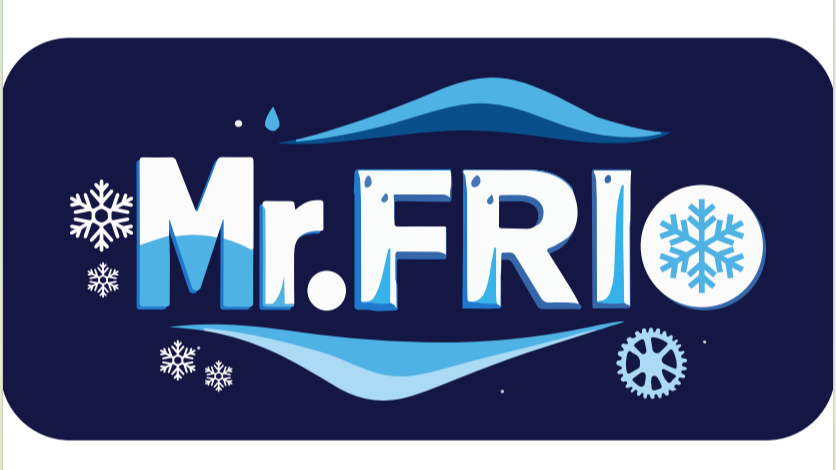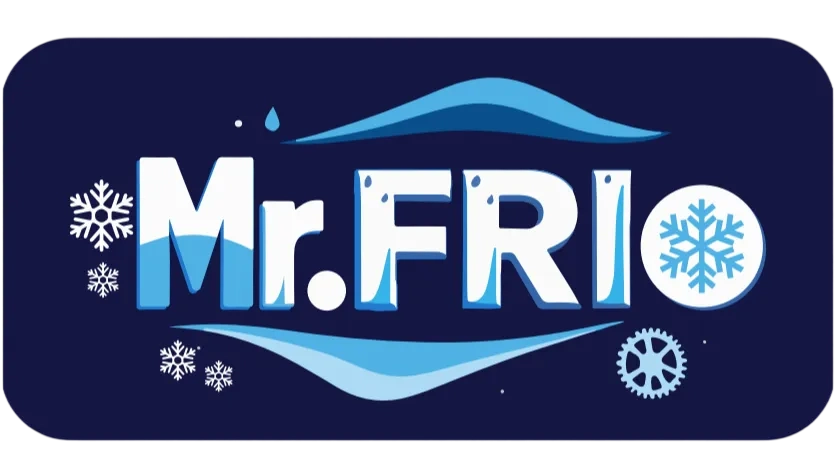Understanding Blast Chiller Functionality and Core Benefits
What Does a Blast Chiller Do? Explaining Rapid Cooling Mechanics
Blast chillers can bring down food temperatures from around 160 degrees Fahrenheit (about 71 Celsius) all the way down to 41 degrees Fahrenheit (roughly 5 Celsius) in just under an hour and a half. They do this by blowing powerful fans across the food at temperatures ranging anywhere from minus 30 to 34 degrees Fahrenheit. The quick drop in temperature gets food out of what the FDA calls the danger zone, which is between 40 and 140 degrees Fahrenheit. Compared to regular refrigeration methods, blast chilling cuts through this risky temperature range up to 80 percent quicker. This means there's far less time for bacteria to grow and multiply on the food during storage.
How Does a Blast Chiller Work? The Science Behind Fast Temperature Reduction
The cooling process occurs in three phases:
- Initial chill: High-velocity air quickly removes surface heat
- Core stabilization: Sub-zero airflow penetrates dense foods
- Equilibrium phase: Internal and external temperatures equalize for safe storage
This method minimizes ice crystal formation by up to 70% compared to conventional cooling, preserving cellular structure and maintaining food quality.
The Benefits of Blast Chilling for Food Integrity and Safety
Commercial kitchens benefit from improved safety and efficiency:
- 54% fewer foodborne illness incidents (Food Safety Magazine 2023)
- 40% longer shelf life for proteins and sauces
- 30% reduction in texture degradation in baked goods
By locking in moisture, nutrients, and texture, blast chilling supports HACCP compliance while reducing waste and enhancing menu consistency.
Evaluating Cooling Performance for Food Safety Compliance
How quickly must food be cooled to prevent bacterial growth?
Keeping food safe from bad bacteria such as Salmonella and E. coli requires proper cooling practices. The general rule is to bring hot food down from around 135 degrees Fahrenheit to about 70 degrees within two hours, then get it to 41 degrees or below by the six hour mark at latest. During an inspection back in 2025, health officials found serious problems at one restaurant in Florida where they left rice sitting too long. After six whole hours, the rice was still way above what's considered safe temperature levels. This shows just how dangerous it can be when food isn't cooled properly and quickly enough.
Preventing bacterial growth through rapid cooling: FDA and HACCP benchmarks
Commercial blast chillers actually comply with those important FDA and HACCP guidelines because they cool down big batches much quicker than regular fridges ever could. Take it from experience most standard refrigeration systems need around four hours or more to do what a good quality blast chiller accomplishes in about ninety minutes flat. These machines bring down the center temperature of those standard sized 4 inch deep pans all the way down to safe levels around 38 degrees Fahrenheit pretty quickly too. And speaking of food safety regulations, these fast cooling times definitely fit within the FSMA rules for controlling both time and temperature during food handling. Restaurants and food service operations find this incredibly helpful when trying to stay compliant throughout their entire workflow from kitchen prep right through to proper storage conditions.
Chilling and freezing capacities: Matching performance to danger zone requirements
Select a unit with 15–20% more capacity than minimum needs to accommodate workflow variability. For example, a kitchen producing 200 lbs of proteins daily should use a chiller capable of processing at least 50 lbs/hour with −22°F airflow. Models with adjustable humidity (30–90% RH) help prevent dehydration without compromising safety.
Case Study: Reducing pathogen risk in high-volume kitchens using optimized cooling cycles
A Midwest hospital kitchen reduced cooling-related violations by 83% after installing a blast chiller with programmable 3-stage cycles: 135°F–70°F in 1 hour, then 70°F–41°F in 2 hours. Automation eliminated manual logging errors, while adaptive defrost cycles cut energy use by 18%. Post-implementation testing showed a 99.7% reduction in Bacillus cereus contamination.
Sizing Your Blast Chiller for Operational Efficiency
Sizing and Capacity Requirements Based on Kitchen Output
Choose a blast chiller based on peak production volume. Kitchens serving 200+ meals daily typically need ≥50 kg capacity; smaller operations (≤100 meals) often require only 20–30 kg units. Use this formula:
Required capacity (kg) = Peak hourly food output × Number of chilling cycles
Include a 15–20% buffer for demand spikes or future expansion.
Menu Planning and Production Volume Considerations
Match equipment to your most frequently chilled items:
| Menu Type | Recommended Capacity | Critical Items |
|---|---|---|
| Bakery/Café | 25-35 kg | Cream-based fillings |
| Full-Service Restaurant | 40-60 kg | Proteins, soups, sauces |
| Catering Operation | 70-100 kg | Bulk entrées, buffet items |
Kitchens with delicate seafood or multi-course menus may benefit from models with zoned temperature controls.
Calculating Hourly Chilling Load: A Data-Driven Approach
Accurate sizing requires assessing:
- Peak-hour food mass needing immediate chilling
- Target chilling time aligned with the FDA’s 90-minute danger zone rule
- Ambient kitchen temperatures, which can slow cooling by 18–25% in environments above 22°C
Properly sized units improve energy efficiency by 25–30% while ensuring consistent HACCP compliance.
Ensuring HACCP Compliance and Regulatory Readiness
Compliance with HACCP, FDA, and other food safety standards in chilling processes
Blast chillers support all seven HACCP principles—hazard analysis, critical control points, monitoring, corrective actions, verification, documentation, and training. According to a 2023 food safety study, kitchens using HACCP-aligned chillers saw a 62% reduction in cooling-related violations compared to non-compliant systems.
Food safety and temperature control in commercial kitchens: Regulatory expectations
The FDA requires cooked foods to exit the danger zone (40°F–140°F) within 6 hours. Blast chillers achieve this in ≤90 minutes, helping prevent the 80% of foodborne illness outbreaks linked to improper cooling (CDC 2022). Operators must ensure their equipment meets FDA Food Code §4-501.112 for rapid cooling and accurate temperature logging.
Built-in logging, alarms, and reporting features for audit readiness
Modern units include digital traceability tools such as:
- Real-time temperature tracking (±1°F accuracy)
- Cycle completion timestamps
- Door-open alerts
- Automated PDF reports for inspectors
These capabilities align with 2024 HACCP audit standards requiring tamper-proof records and automated verification, cutting audit preparation time by 35% (NSF International).
Controversy Analysis: Gaps between manufacturer claims and real-world HACCP compliance
Despite 92% of manufacturers claiming HACCP readiness (2024 Commercial Kitchen Tech Report), field audits reveal:
- 41% lack valid calibration certificates
- 33% have faulty door sensors
- 28% use probes incompatible with FDA-recognized measurement protocols
These discrepancies emphasize the importance of third-party certification, such as NSF/ANSI 7, before purchase.
Advanced Features and Support for Long-Term Reliability
Control Systems and Digital Features: Temperature Probes and Programmable Cycles
Modern blast chillers come equipped with multiple temperature sensors across different zones plus customizable cooling cycles that keep things under tight control when chilling food products. These systems tweak air movement and time settings as they go along using live temperature readings from inside the unit, which helps keep everything within safe limits according to FDA guidelines about dangerous temperature ranges. The machines also have built-in programs specifically designed for various types of food items ranging from fragile baked goods all the way to heavy cuts of meat. This programming not only cuts down on mistakes made by staff but also saves energy consumption significantly over traditional methods, with some facilities reporting around an 18 percent reduction in power usage after switching to automated controls.
Advanced Features Like Multiple Probes, Customizable Cycles, and Automation
High-end models support 4–6 simultaneous probes, allowing mixed loads without cross-contamination. Customizable settings let chefs optimize speed for soufflés or humidity retention for roasted meats. Integration with kitchen display systems enables automatic cycle initiation post-cooking, minimizing delays that could compromise safety.
Trend: AI-Integrated Blast Chillers Adapting to Workflow Patterns
New kitchen equipment is starting to incorporate artificial intelligence that actually watches what happens in commercial kitchens and adjusts cooling times accordingly. Take a busy restaurant with around 250 seats for example these smart systems figure out when they'll need to chill food after service hours and get the refrigeration units running before anyone even needs them. According to recent industry reports from late 2024 or early 2025, restaurants using this kind of tech typically see their highest energy usage drop by about a fifth, plus there's roughly a third less variability in how consistently food stays at safe temperatures throughout rush hours and slow periods alike.
Manufacturer Reliability and After-Sales Support: Warranty, Spare Parts, and Technical Service
Long-term reliability depends on strong technical support—a priority for 68% of operators over initial cost. Choose vendors offering ≤4-hour emergency response, readily available spare parts (especially for compressors and evaporator coils), and extended warranties. Technician-certified maintenance logs are increasingly expected for HACCP validation and insurance compliance.
FAQs
What is a blast chiller and how does it work?
A blast chiller rapidly reduces the temperature of food by blowing powerful sub-zero air across it, significantly cutting down the time the food spends in the danger zone where bacteria can multiply.
Why is it important to reduce food temperature quickly?
Quickly reducing food temperature prevents bacterial growth and prolongs the shelf life of food, maintaining its safety and quality.
How do blast chillers comply with food safety regulations?
Blast chillers comply with FDA and HACCP guidelines, achieving rapid cooling times that prevent bacteria growth and ensure food safety.
What are the benefits of using a blast chiller in a commercial kitchen?
Using a blast chiller in a commercial kitchen reduces the risk of foodborne illnesses, increases shelf life, and maintains food integrity, moisture, and nutrients.
Are there any advanced features available in modern blast chillers?
Yes, modern blast chillers come with features like multiple temperature probes, programmable cycles, AI-integration, and digital reporting tools for improved efficiency and compliance.
Table of Contents
- Understanding Blast Chiller Functionality and Core Benefits
-
Evaluating Cooling Performance for Food Safety Compliance
- How quickly must food be cooled to prevent bacterial growth?
- Preventing bacterial growth through rapid cooling: FDA and HACCP benchmarks
- Chilling and freezing capacities: Matching performance to danger zone requirements
- Case Study: Reducing pathogen risk in high-volume kitchens using optimized cooling cycles
- Sizing Your Blast Chiller for Operational Efficiency
-
Ensuring HACCP Compliance and Regulatory Readiness
- Compliance with HACCP, FDA, and other food safety standards in chilling processes
- Food safety and temperature control in commercial kitchens: Regulatory expectations
- Built-in logging, alarms, and reporting features for audit readiness
- Controversy Analysis: Gaps between manufacturer claims and real-world HACCP compliance
-
Advanced Features and Support for Long-Term Reliability
- Control Systems and Digital Features: Temperature Probes and Programmable Cycles
- Advanced Features Like Multiple Probes, Customizable Cycles, and Automation
- Trend: AI-Integrated Blast Chillers Adapting to Workflow Patterns
- Manufacturer Reliability and After-Sales Support: Warranty, Spare Parts, and Technical Service
- FAQs


